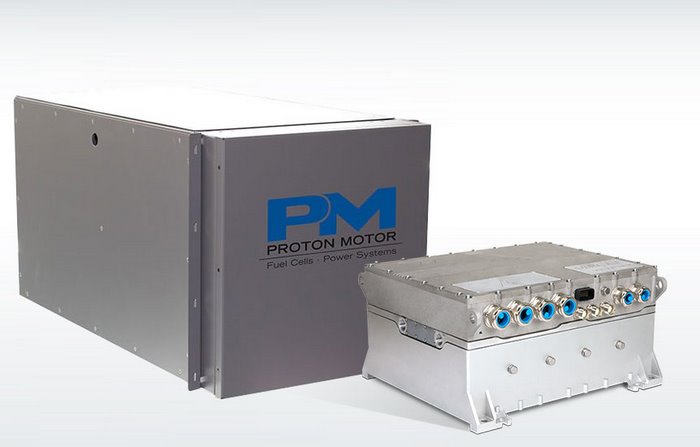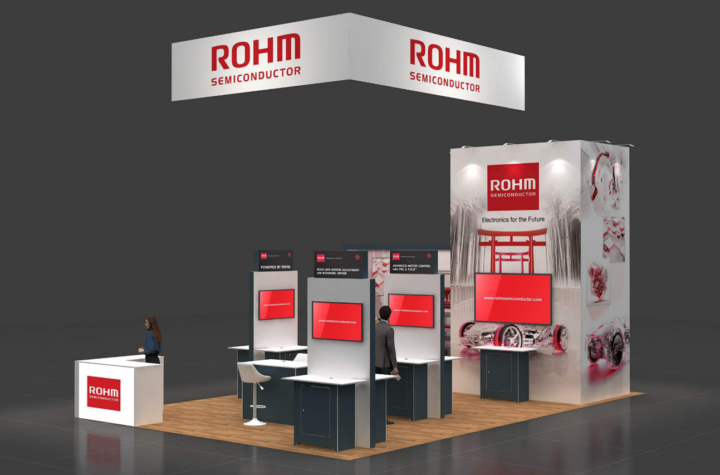
With their high efficiency, zero emissions, and fast refilling, fuel cells play an important role in the electrification of utility and special vehicles. However, hydrogen can only be used efficiently with a further technology that decisively affects the overall efficiency: a voltage boost with the right DC/DC converter!
To benefit from the advantages of a drive system based on fuel cells, it is advisable to focus on the system voltage, among other things. In most cases, fuel cells have an output voltage that is too low for larger system outputs, and they exhibit a volatile voltage level. These differences can be compensated for by a DC/DC converter that controls the voltage level when power is fed into the DC link. With the support of the Central Innovation Programme for SMEs (ZIM), ARADEX AG has developed the DC/DC converter VP5000-DCDC200-HL, which optimizes the integration of fuel cells in the drive system.
Practical example: Integration of fuel cells in the drive system
It is possible to extend the service life of fuel cells considerably while minimizing the power drain. If a battery is used in the drive along with a fuel cell, it is a good idea to use the fuel cell to generate medium power levels and the buffer battery to cover the power peaks. This principle is also known as a “range extender with fuel cell”. The desired battery buffer time plays an important role in dimensioning the fuel cell and battery. This is shown by the example of an 18-ton bus, in which the planned route profile also plays an important part in selecting the battery buffer time. In this example, the performance profile for buffer times of 5 (blue), 20 (red), and 60 (black) minutes is considered (see illustration). Power peaks appear up to 250 kW, and the average power shows a strong dependency on the selected buffer time. The black graph shows the required mean power at 18 kW. This diagram makes it clear that the larger the battery buffer, the more constant the power drain from the fuel cell.
Function of the DC/DC converter
The DC/DC converter controls the flow of power from the fuel cell to the DC link. The use of an integrated transformer in the ARADEX DC/DC converter solves the problem of the great voltage level difference between the battery and the fuel cell. The high power density was realized by ARADEX through a clever switching topology as well as high-frequency cycling semiconductors.

To show the increase in efficiency with a DC/DC converter, the effects without a DC/DC converter in a system with fuel cell and buffer battery are examined: In this case, the battery voltage would have to be lower than that of the lowest fuel cell voltage. To generate the same power, correspondingly higher current voltages are then necessary. Since the power loss increases exponentially in relation to the current strength, such a constellation (without DC/DC converter) would entail considerably higher energy losses. A further aspect is the higher cost for an inverter, which has to be correspondingly designed for higher currents. For greater outputs, it is therefore a good ideal to set the DC link voltage between 300 and 800 V DC, depending on the application, and to increase the efficiency for the overall system.
The coordinated solution from ARADEX
ARADEX has an optimally coordinated combination of a DC/DC converter and fuel cell in its portfolio: The DC/DC converter VP5000-DCDC200-HL and the fuel cell PM Module S25 from Proton Motor Fuel Cell (25 kW) are optimally compatible to each other, with a root mean square current of 400-480 Arms (DC/DC converter) and 450 Arms (fuel cell).
The DC/DC converter from ARADEX has achieved efficiencies of up to 99% in tests.
More information:
ARADEX AG
Ziegelwaldstr. 3
73547 Lorch, Germany
Phone: +49 / (0)7172 / 9181-0
E-Mail: sales@aradex.com
Web: www.aradex.com





More Stories
Baja SAE Carolina:
ROHM to Showcase Advanced Power Electronics at APEC 2025
ROHM Launches 650V GaN HEMT in a Compact, High-heat Dissipation TO-Leadless Package